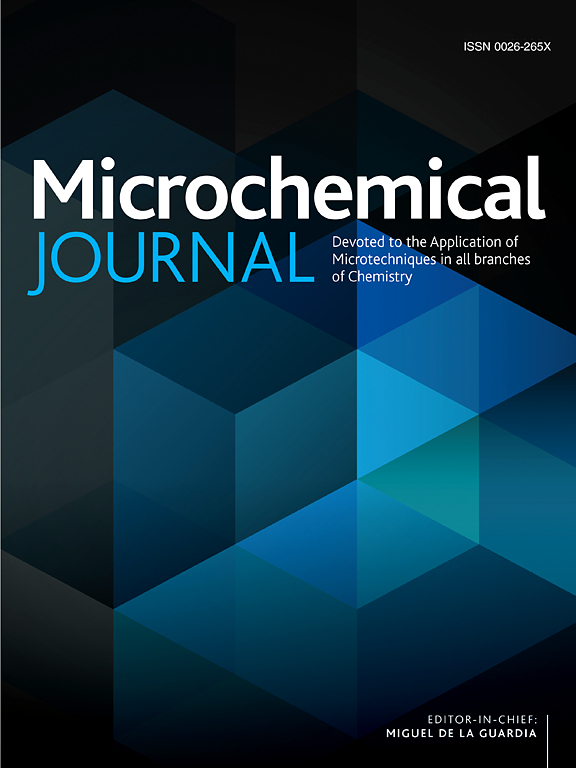基于MWS-RF-SDAE的智能分析系统:一种新的法医体液和干扰物拉曼光谱分析方法
IF 4.9
2区 化学
Q1 CHEMISTRY, ANALYTICAL
引用次数: 0
摘要
拉曼光谱已成为法医科学中开创性的体液分析工具,为证据检验提供了独特的方法。然而,它的实际应用往往受到噪声干扰、基线漂移和干扰等挑战的阻碍,这些挑战会阻碍准确识别。为了解决这些限制,本研究引入了一种创新的智能分析系统,该系统结合了移动窗口平滑(MWS)、随机森林(RF)和堆叠去噪自动编码器(SDAE),统称为MWS-RF-SDAE,可显著提高对体液和干扰物质的识别精度。建立了一个强大的拉曼光谱数据库,其中包含六种体液和31种通常在犯罪现场遇到的常见干扰物质的光谱。采用反向传播(BP)分类器作为评价指标来衡量系统性能。在测试的6种预处理方法中,MWS被认为是提高光谱数据质量最有效的方法。此外,研究还研究了各种特征选择技术,结果表明,射频方法有效地减少了特征冗余,并将BP预测准确率提高到88.4%。然而,由于光谱相似性和仪器噪声,在区分体液与干扰物质方面仍然存在挑战。为了解决这些问题,开发了一个SDAE预测模型,并使用三个关键指标进行严格评估:准确性、召回率和F1分数。结果表明,MWS-RF-SDAE方法的预测精度达到99.85%,有效解决了物质干扰导致的预测精度低的问题。该系统的实际适用性通过六个真实案例的样本得到进一步证实,强调了其在法医应用中的可靠性。该系统的一个关键特征是它能够计算未知样本的预测置信度,从而允许对低置信度结果进行有针对性的验证。该功能不仅简化了法医调查,还为犯罪现场分析提供了强大的支持。通过整合这些先进技术,本研究标志着法医科学的智能化和自动化取得了重大进展,有可能通过提高体液鉴定的准确性和效率来彻底改变该领域。本文章由计算机程序翻译,如有差异,请以英文原文为准。
Intelligent analysis system based on MWS-RF-SDAE:A novel analysis method in forensic science for body fluids and interferents identification by Raman spectra
Raman spectroscopy has emerged as a groundbreaking tool for body fluid analysis in forensic science, providing a unique approach to evidence examination. However, its practical application is often hampered by challenges such as noise interference, baseline drift, and interferents, which can impede accurate identification. To address these limitations, this study introduces an innovative intelligent analysis system that combines Moving Window Smoothing (MWS), Random Forest (RF), and Stacked Denoising Autoencoder (SDAE)—collectively referred to as MWS-RF-SDAE—to significantly improve the recognition accuracy of body fluids and interfering substances. A robust Raman spectroscopy database was established, containing spectra from six types of body fluids and 31 common interfering substances typically encountered at crime scenes. The Backpropagation (BP) classifier was utilized as an evaluation metric to gauge system performance. Among six preprocessing methods tested, MWS was identified as the most effective in enhancing spectral data quality. Furthermore, the study investigated various feature selection techniques, demonstrating that the RF method effectively minimized feature redundancy and increased BP prediction accuracy to 88.4%. Nevertheless, challenges remained in differentiating body fluids from interfering substances due to spectral similarities and instrumental noise. To address these issues, an SDAE prediction model was developed and rigorously assessed using three critical metrics: Accuracy, Recall, and F1 score. The results revealed outstanding performance, with the MWS-RF-SDAE method achieving a prediction accuracy of 99.85%, effectively resolving the issue of low accuracy caused by interfering substances. The system’s practical applicability was further confirmed through six samples in real-world cases, underscoring its reliability for forensic uses. A key feature of the system is its capability to calculate prediction confidence rates for unknown samples, allowing for targeted validation of low-confidence results. This functionality not only streamlines forensic investigations but also offers robust support for crime scene analysis. By integrating these advanced techniques, this study marks a significant advancement toward the intelligentization and automation of forensic science, with the potential to revolutionize the field by enhancing both the accuracy and efficiency of body fluid identification.
求助全文
通过发布文献求助,成功后即可免费获取论文全文。
去求助
来源期刊

Microchemical Journal
化学-分析化学
CiteScore
8.70
自引率
8.30%
发文量
1131
审稿时长
1.9 months
期刊介绍:
The Microchemical Journal is a peer reviewed journal devoted to all aspects and phases of analytical chemistry and chemical analysis. The Microchemical Journal publishes articles which are at the forefront of modern analytical chemistry and cover innovations in the techniques to the finest possible limits. This includes fundamental aspects, instrumentation, new developments, innovative and novel methods and applications including environmental and clinical field.
Traditional classical analytical methods such as spectrophotometry and titrimetry as well as established instrumentation methods such as flame and graphite furnace atomic absorption spectrometry, gas chromatography, and modified glassy or carbon electrode electrochemical methods will be considered, provided they show significant improvements and novelty compared to the established methods.
 求助内容:
求助内容: 应助结果提醒方式:
应助结果提醒方式:


